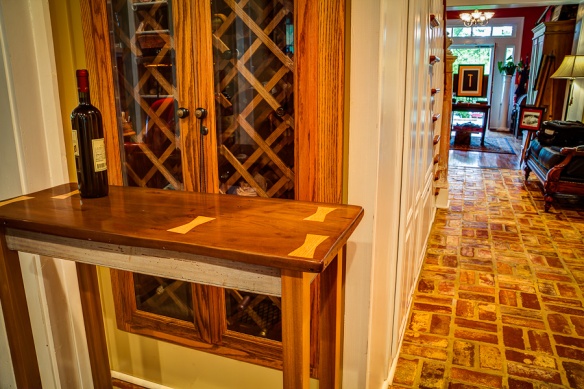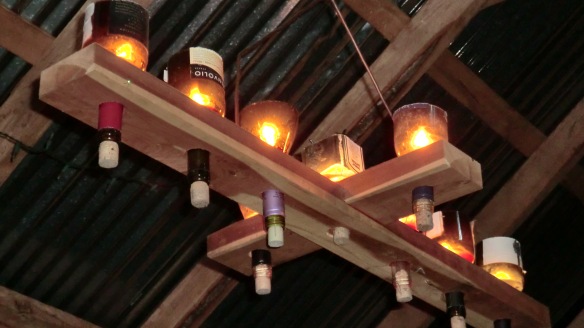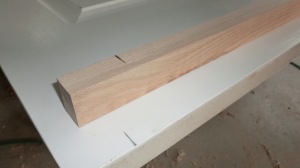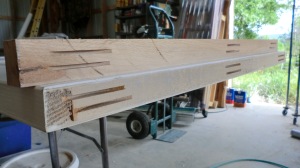 On my previous post, Oh the Stories That Could Be Told…., I included a picture of my Postal Entertainment Bar (shown above, or check out the post in its entirety here https://theiveycourt.wordpress.com/2012/07/31/oh-the-stories-that-could-be-told/). Well, I’m happy to report that it has found a nice, new home. You know, it’s kind of funny. On one hand I hate to see my works leave the shop. All the time and effort spent building each piece can create a connection that makes it tough to see them leave. Yet, on the other hand its a pretty cool feeling knowing that someone, or another family, will be “adopting” something that I created.
On my previous post, Oh the Stories That Could Be Told…., I included a picture of my Postal Entertainment Bar (shown above, or check out the post in its entirety here https://theiveycourt.wordpress.com/2012/07/31/oh-the-stories-that-could-be-told/). Well, I’m happy to report that it has found a nice, new home. You know, it’s kind of funny. On one hand I hate to see my works leave the shop. All the time and effort spent building each piece can create a connection that makes it tough to see them leave. Yet, on the other hand its a pretty cool feeling knowing that someone, or another family, will be “adopting” something that I created.
 So now, what to build now that I’ve cleared up a little space in the shop. Well, sometimes my inspiration doesn’t start with an image of the end result in my head, but rather it usually sparks from what materials I have on hand. Pictured to the right is another piece that I salvaged from the Wannville Post Office. I confess that when I originally stored it I didn’t give it much hope for use. At best I thought with it being split in two that I might could use it for face frames.
So now, what to build now that I’ve cleared up a little space in the shop. Well, sometimes my inspiration doesn’t start with an image of the end result in my head, but rather it usually sparks from what materials I have on hand. Pictured to the right is another piece that I salvaged from the Wannville Post Office. I confess that when I originally stored it I didn’t give it much hope for use. At best I thought with it being split in two that I might could use it for face frames.
 So I did a quick look over and removed any nails from the wood face (I left the small tacks on the edge, which were used for attaching snuff advertisements, as they would not affect cleaning up the wood). I ripped the most efficient part of the wood on the table saw and then planed both sides (see photo to the left). I was surprised by the fact that the boards were dead straight and had no twist to them. With such straight boards, I decided to use them to build what I call a farm-house type table top, including traditional bread board ends. The size of the boards meant that the top would be narrow, which I was ok with as I thought it would be great for another Postal Entertainment Bar.
So I did a quick look over and removed any nails from the wood face (I left the small tacks on the edge, which were used for attaching snuff advertisements, as they would not affect cleaning up the wood). I ripped the most efficient part of the wood on the table saw and then planed both sides (see photo to the left). I was surprised by the fact that the boards were dead straight and had no twist to them. With such straight boards, I decided to use them to build what I call a farm-house type table top, including traditional bread board ends. The size of the boards meant that the top would be narrow, which I was ok with as I thought it would be great for another Postal Entertainment Bar.
Below are pics of the finished product. The first photo shows the installed bread board ends. One question I thought about was how the unfinished edges would look when glued up with the freshly cut edges of the end boards. After applying a coat of finish, I was happy to see that the Tung Oil really unified all of the edges to a similar color.
And here is the finished product. It measures roughly 44″ long, 34″ high, and is about 13″ deep. The assembly of the table is traditional mortise and tenon joinery, and is finished in a traditional Tung Oil finish with a lacquer top coat for durability. I like the idea of using it as an entertainment bar, but it could also be functional as a small serving table,or a hallway display table. Of course, this piece is available for “adoption” to a good home. Shoot me an email, hunt22j@hotmail.com, for a price quote on this custom piece of furniture.













 Once assembled there was a seam between the door and the wood. This was due to the door having a very small chamfer edge. Not a problem as I filled it with a 2 part wood filling putting, leaving it a little proud, and then sanded with a random orbital sander once it was dry. The picture to the left illustrates the repair with only one coat of primer. One thing to keep in mind is to follow the wood grain of the door with the new repair. Also, some heavy brush stokes will help to add some of the graining which will blend the repair in with the door.
Once assembled there was a seam between the door and the wood. This was due to the door having a very small chamfer edge. Not a problem as I filled it with a 2 part wood filling putting, leaving it a little proud, and then sanded with a random orbital sander once it was dry. The picture to the left illustrates the repair with only one coat of primer. One thing to keep in mind is to follow the wood grain of the door with the new repair. Also, some heavy brush stokes will help to add some of the graining which will blend the repair in with the door.





